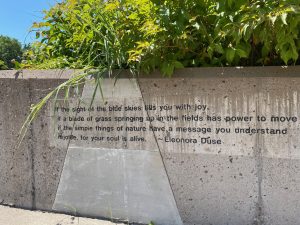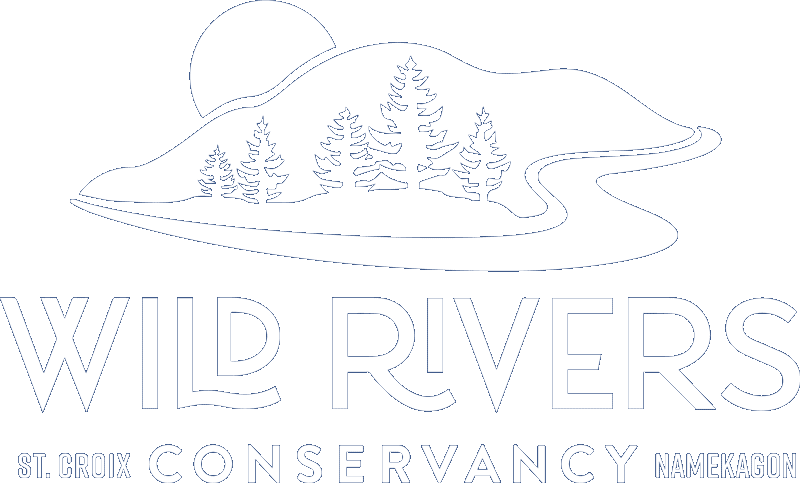Everyone has something memorable about their commute to work. Whether it’s a landmark passed during the drive, or having to gently move a cat off an office chair when working from home, there’s something about that routine that sets up the work of the day.
For the staff of the Wild Rivers Conservancy, this routine includes powerful reminders of nature and conservation. Many of us live near the Riverway, and so the trace of our commutes winds us past the river’s turns and through landscapes carved by glaciers and lava flows through the millennia. We see the legacy of the Wild and Scenic Rivers Act on our way to work—work to continue that legacy of preservation.

(Photo: Sophia Patane, Wild Rivers Conservancy)
My own commute takes about an hour and winds along the St. Croix from Stillwater to St. Croix Falls, up and down hills through historic river towns and past glimpses of the river through lush foliage. When I cross over the bridge between the Minnesota and Wisconsin Interstate State Parks, white pines tower in the periphery of my vision. Turkey vultures catching a different kind of current over St. Croix Falls send shadows skating across the concrete parking lot as I pull in to park.
But when I get out of my car and walk across the lot, it’s the quotes etched in concrete along the walls that start my work on the right note. “The earth is what we all have in common,” wrote Wendell Berry, and I read it as a benediction for the day.

(Photo: Sophia Patane, Wild Rivers Conservancy)
Further on, Henry David Thoreau’s words are shaded by the reach of eager plants. Yet I can still read through their leafy abundance—“Nature, even when she is scant and thin outwardly, satisfies us still by the assurance of a certain generosity at the roots.” I think of the trees visible at the edge of limestone cliffs on the St. Croix, holding on even when it seems impossible to stand against a storm.
As I continue walking, I see Elenora Duse’s quote and think of Wild Rivers Conservancy’s outreach work:
If the sight of the blue skies fills you with joy,
if a blade of grass springing up in the fields has power to move
if the simple things of nature have a message you understand
rejoice, for your soul is alive.
We are fortunate to work for a place that fosters that liveliness of spirit—witnessing the passion and love that so many people have for the St. Croix and Namekagon Rivers and their tributaries is an endless joy and inspires our tireless efforts to protect, restore, and celebrate the Riverway and the watershed of the St. Croix.

(Photo: Sophia Patane, Wild Rivers Conservancy)
Part of these efforts have included creating a program, Explore Wild Rivers, to break down barriers to accessing our National Park so that all can feel safe and welcome. There are so many ways to explore this wild and scenic place, and as inclusivity continues to be a key point of discussion around the world, we work to create spaces for a multitude of Riverway experiences. From guided hikes and paddles to fly fishing workshops and winter snowshoe walks, there is something for everyone. Even during COVID-19, we’ve been working hard to bring the joy of the natural world to our members through our online and virtual programs and postings—and now, some small in-person events.

(Photo: Sophia Patane, Wild Rivers Conservancy)
I often ask myself what we can do to bring William Blake’s words to life for those who come to the Riverway: “To see a world in a grain of sand, and heaven in a wild flower, / Hold infinity in the palm of your hand, and eternity in an hour.” The Riverway contains wild places permeated with beauty and peace, and even though such spaces are increasingly rare, we are all fortunate to have a national park in our backyard. It becomes vital, then, to facilitate connections so all can experience these rare qualities. When I glimpse the river for the first time each day I drive to the office, I feel like I’ve been welcomed home. We work so that all can experience that feeling now and for generations to come.
So, have you wondered how you can hold eternity in an hour? Join us at the river, paddle around its banks, or hike the bluffs and trails, and rejoice, for your soul will feel rejuvenated.
